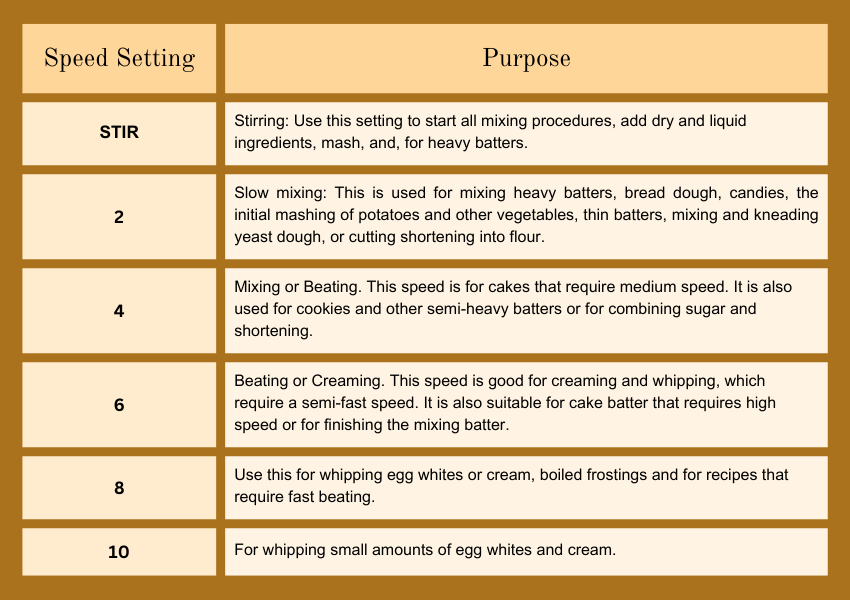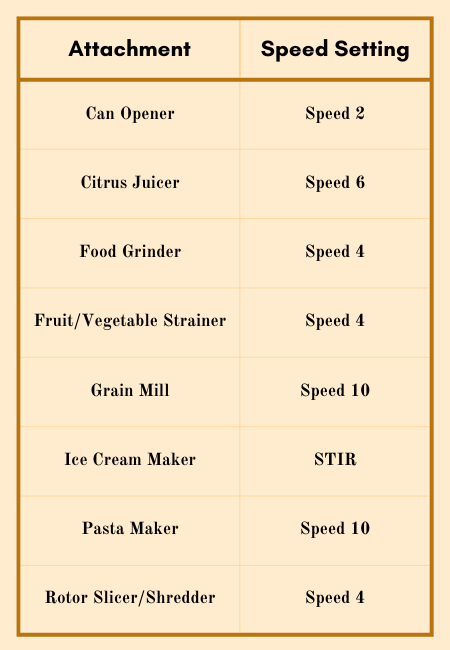Notice: I receive compensation if you buy something through affiliate links on this post. This does not change the price you would pay.

Do you covet a KitchenAid Artisan mixer?
Who doesn’t?
It’s pretty. It’s sexy. It’s the star of stand mixers.
But do looks and fame equate to quality? Do you worry that the praises are overblown?
Is it a charming enchantress that ultimately leaves you disappointed and your wallet broken?
How will you get the answers? Through due diligence and a comprehensive KitchenAid Artisan stand mixer review.
You can either bury your head going through countless vague reviews and use up precious time…
…or you can continue reading to find answers to your most nagging questions.
We dug deep for days to create this detailed review that separates the myths from the facts, addresses crucial concerns, and tells you what this stand mixer can do.
This is different from your typical review, which only lists features. I’m sure you don’t believe that’s enough.
You want to know their benefits and limitations and determine how they will affect your objectives.
And we’ll give you that.
Read on…
Table of Contents
- 1 KitchenAid Artisan Review of Motor Power: Don’t Focus on Wattage
- 2 Features, Functionality and Convenience
- 3 KitchenAid Artisan Stand Mixer Review: Mixing Performance
- 4 What Accessories and Attachments Are Available for the Artisan Mixer?
- 5 Care and Cleaning
- 6 What Else Should You Know?
- 7 Price of the KitchenAid Artisan Mixer
- 8 Pros
- 9 Cons
- 10 Customer Reviews of KitchenAid Artisan
- 11 Is This The Right Mixer For Your Kitchen?
KitchenAid Artisan Review of Motor Power: Don’t Focus on Wattage
Let’s be clear: while the power rating is essential, it alone does not determine a stand mixer’s power and performance. We must consider other metrics.
My impression of the KitchenAid Artisan is that it’s powerful (maybe 500 watts). However, it runs on just a 325-watt direct-drive AC motor located overhead.
Let’s dissect that phrase in “bold” to fully understand a stand mixer’s power.
Wattage
The Artisan is not a heavy-duty stand mixer, but 325 watts is excellent for almost all mixing jobs. I say “almost” because it has limitations when making bread.
What is an AC motor?
AC stands for alternating current.
For our purposes, it affects the mixer’s torque, which is the force that turns objects around.
What has torque got to do with a stand mixer?
First, it is vital for kneading dough. This article discusses AC motors and torque in detail.
What is a direct-drive motor?
It’s a system of gears that transfers power directly to the bowl and its contents.
What is the advantage of a direct-drive motor?
Here they are:
- Reduced power loss because it transfers power more efficiently since no belt or other components separate the motor from the mixing mechanism, wasting less energy.
- It is better for heavy dough because it provides greater torque even at lower speeds.
- It is more durable and requires less maintenance than belt-driven motors because it has fewer moving parts.
- Quieter operation.
Can you use the KitchenAid Artisan if you’re in another country?
The variant made for the United States is 110 volts.
You can use a step-down transformer from a place that operates on 220 volts. Alternatively, you can get the 220-volt model, which is more expensive.
Let’s discuss features and functionality next…
Features, Functionality and Convenience
Is It A Tilt Head Or A Bowl Lift?
The Artisan KitchenAid Mixer is a tilt-head because you can raise its motor head at an angle.
What is tilting the head for? It provides space for attaching or removing the beater, whip, hook, and bowl. That space is also necessary when scraping the bowl or mixing manually.
Here are a couple of important reminders when using the tilt-head feature:
- You should unlock the locking pin before tilting the head.
- Be sure to lock the head before running the mixer; otherwise, it will wobble.
A tilt-head mixer is your friend if you have only one good arm. There is no button to push; simply raise the head backward in one gentle sweep.
Note that the bowl of a tilt-head stand mixer is fixed.
Learn more about a tilt-head mixer here.
Are There Ten Speeds in the KitchenAid Artisan Series?
You can find the speed control lever and settings on the side of the motor head.
The printed speed settings start with “Stir” and go from 2 to 10. However, Speeds 3, 5, 7, and 9 are between Speeds 2, 4, 6, 8, and 10.
Do you need such fine adjustments in speed control? Not really. The five settings shown are sufficient for most mixing jobs.
Fast speeds may not be attained or maintained with dense loads. Also, differences between speeds at higher settings may not be noticeable with heavy loads, large amounts, or thick consistencies.
Is the slow start slow enough?
You should use the “STIR” at the start of every mixing job. It runs slowly enough to incorporate the ingredients a bit before moving to a faster speed.
The goal is to prevent or reduce flour puffs and ingredient splatter.
If you have ever used an electric mixer without a slow start, you know what it’s like with flour and liquid flying off the bowl and into your work area or, worse, into your face.
TIP: Always start on “STIR” each time you add ingredients to the mix.”
Below is a guide to the different functions and uses of each speed setting:

Will You Have to Chase It?
Does it shake, wobble, walk, or run? Yes, with difficult dough. Another issue is that the locking pin loosens when the head shakes. Avoid using it for very stiff dough.
One more thing…
Is it quiet or noisy?
It’s not quiet, but it’s not annoying. Let’s just say you can use it with the baby sleeping in another room.
How Tall and Heavy is the KitchenAid 5-Quart Artisan Mixer?
The dimensions are approximately 8 ¾ inches wide, 13 15/16 inches high, and 14 1/8 inches deep.
With the head raised, the total height is around 17 ½ inches. If you plan to place it underneath cabinets, take this into account.
It weighs 26 pounds, so moving it around is not pleasant—except if you need to free up counter space on a rare occasion. Otherwise, just designate a permanent space for it.
What Colors Are Available For The KitchenAid Mixer Artisan Series?
Dressed in lovely colors, you can’t help but covet it if you happen to see them lined up on display.
It is one of the most wished-for kitchen gadgets on brides’ wedding registries.
It’s not hard to see why. It has the widest selection of shades (39): bold reds, fiery pinks, dainty greens, sunny yellows, and more.
One of the most sought-after KitchenAid Artisans is the pink one. Other popular colors are ice blue, grape, onyx, and white.
Where Is The KitchenAid Artisan Made?
KitchenAid stand mixers are assembled in Greenville, Ohio, USA, and the die-cast parts are manufactured in various plants worldwide.
Now, let’s see if this mixer delivers on its promise.
KitchenAid Artisan Stand Mixer Review: Mixing Performance
What Do The Planets And The Artisan Mixer Have in Common?
Answer: Like the planets, the Artisan’s beater spins on its axis while it moves around the bowl. For a thorough and even mixing, the beater moves to and touches 59 different points in the bowl for every rotation.
It’s called a “planetary mixing action.”
Can It Handle Various Mixtures Well?
My sister loves making and decorating layered cakes. She uses a variety of frostings…, including whipped cream, buttercream, boiled icing, fondant, and cream cheese.
She excels at cake decorating and delights in whipping up gorgeous cakes for her friends and relatives on birthdays. She also loves concocting her signature pies and pastries, which she usually gives as presents.
On the other hand, my aunt has perfected the “cookie.” The kids in our family always look forward to her Christmas cookies, and she is more than happy to delight them with her attractive and delectable concoctions.
Guess what?
My sister and my aunt both use Artisan stand mixers.
Go ahead and prepare a double batch of your favorite cookies. Come Christmas season, fill those cookie jars with crunchy, chewy goodness. Yes, you can with an Artisan mixer.
My sister also taught me how to prepare cooked egg white frosting. The method involves heating egg whites and sugar over a pan of simmering water and whipping the hot mixture.
Can you place hot content in the metal bowl of the mixer and beat, blend, or whip it? You can. Both hot and cold content will blend well.
Let’s Talk About Bread
I won’t tell you it is perfect for bread because it is not a bread mixer.
It can knead bread dough and does an excellent job of it. But there’s a catch: use it occasionally or intermittently. Two loaves at a time are ideal, enough for two to three people who don’t feast on bread.
Some owners do not recommend it for dry, stiff dough as it labors, strains, and shakes.
There seems to be a consensus that it’s not for mixing big amounts of high-load batters. It’s not for you if you make bread daily or often prepare difficult dough like sourdough or bagel.
If you require a mixer for frequent bread making and making loaves at a time, the Pro Line is the toughest and biggest for home use.
ALERT!
Here are a few reminders you must heed if you use your Artisan KSM150P mixer for bread.
- NEVER, EVER exceed Speed 2 on bread dough and other thick batters, like a double batch of thick cookie dough. Sticking to a low speed may be the most important step to protecting your mixer’s motor.
- Be careful. One owner reported accidentally sweeping the speed control lever to a higher speed, damaging her mixer.
- Observe a maximum mixing time of 3 to 4 minutes or even lower.
TIP!
Preparing dough with a stand mixer is different from doing it by hand. You may have to alter the recipe, use a different technique, or change the procedure slightly. It might take a few trials to achieve the desired result.
Is a 5qt stand mixer big enough? It can hold three cake boxes, but only two if you add nuts, dried fruits, or chocolate chips.
According to KitchenAid, the mixer yields approximately 4 1/2 loaves of bread, 9 dozen cookies, and 7 pounds of mashed potatoes. But I wouldn’t max it out.
The Scraping Subject
A common issue for almost all stand mixers is scraping content off the bowl side.
This is a valid concern because each time you scrape or mix manually, you must unlock the head, lift it, scrape, lower it, and lock it. If you are using the pouring shield, you must remove it first before raising the head. It’s cumbersome to do this several times.
The correct beater-to-bowl clearance is critical for thorough mixing and less scraping.
Follow these steps to get the correct adjustment:
- Insert the beater into the shaft.
- Drop a dime into the empty bowl.
- Turn the mixer on and set the speed lever to “2”. The beater should be able to move the coin ¼ in. to ½ in. with each sweep. If not, adjust the beater height (next steps)
- Tilt the motor head and locate the adjustment screw at the bottom.
- To raise the beater, turn the screw counter-clockwise or clockwise to lower it.
- Lower the head.
- Repeat Step 3.
- Adjust and test until you get the correct clearance
Setting the correct distance between the beater and the bowl reduces scraping to about once or twice but does not eliminate it.
If you don’t want to scrape, I suggest you get a Flex Edge beater with flexible scrapers.
What Accessories and Attachments Are Available for the Artisan Mixer?
Accessories
Included in your purchase are the following Kitchenaid Artisan mixer accessories:
- Coated Flat Beater for beating, blending, and general mixing.
- Aluminum Wire Whisk incorporates air into cream, butter, and egg whites to create a fluffy texture.
- Coated C-Dough Hook for kneading dough for bread and pizza.
- Stainless Steel 5-quart Bowl with handle
- Plastic Splatter Shield guards against splashes and flour clouds.
The bowl with a handle is easier to manage and move around. It reduces wrist, hand, and finger fatigue, especially when the bowl is almost full.
Transferring batter from a bowl without a handle and scraping stuff that clings to its wall can be annoying. The bowl swings, and you have to hold tighter to prevent it, which puts more pressure on your wrist and hand.
Let me tell you…the pouring shield has made my baking life easier.
Without it, I have to time the instance when I add powdered ingredients so they don’t fall into the turning beater. You know what happens if they do: flying powdery clouds.
With a splatter shield, there is one less matter to mind.
However, some people are irked that it does not fit snugly on the bowl and just sits on top. It dislodges with a slight bump, which is true and is one more thing to consider.
There is a reason for the loose fit: it is quicker to remove and put back when you have to scrape the batter off the bowl. Imagine if it fits tightly. You have to use both hands to remove it and put it back.
I prefer quicker manipulation and less mess to clean.
It’s individual. You can always choose not to use it.
Attachments: Why You Shouldn’t Settle With Just a Stand Mixer
If you haven’t already heard…
…this is not just a stand mixer.
With KitchenAid Artisan mixer attachments, you can turn it into an ice cream maker, a pasta maker, a grain mill, a juicer, a fruit and vegetable slicer, etc.
They are not included with the main mixer unit but can be purchased separately.
You can’t get them in one package, which gives you flexibility. You can spend on what you want, need, or have the budget for and can always buy more later if your needs change or when you have the money to spare.
Some, like the various pasta attachments, are available in sets if you want to save a bit.
Here is a list of stand mixer attachments from KitchenAid.
How do you use them with a KitchenAid 5-qt. Artisan stand mixer?
On the front of the motor head is a power hub where all attachments, except the ice cream maker, are coupled. Remove the metal cover to locate it.
Once an attachment fits appropriately, switch the machine as you would when using it as a mixer.
What speeds should you use with each attachment?
We have you covered. Below is a Speed Guide:

If you already have attachments that you used with another KitchenAid model, you can use them with this model. Kudos to KitchenAid for considering the customer in this respect.
Care and Cleaning
Before you use a KitchenAid Artisan series stand mixer, there’s one thing you should do to avoid frustration.
What is it?
An issue with some people who bought this product is…
…their batters or dough turned grey during their first attempts. Several washings and scrubbings with soap and water proved futile.
What? Why?
A special coating covers the bowl, and you can’t remove it with ordinary washing,
How do you get rid of the blackish stuff then?
Scrub it using one of the following recommendations:
- A mixture of lemon juice and salt;
- Baking soda paste;
- BarKeeper’s Friend.
Customers point out that the manual or the box needs to include this instruction.
Unplug the unit after using it and before attempting to clean it. Wipe it with a damp towel and clean the accessory shaft.
Hate hand washing? Don’t worry. All accessories are dishwasher safe.

What Else Should You Know?
- KitchenAid says that the Artisan series 5 qt. stand mixer has been factory-adjusted so that the beater clears the bowl, but several owners have found that this is not the case.
- Do not attempt to scrape the bowl while the mixer is running. Instead, switch off the unit and tilt the head. Some people find all those steps bothersome, but the beater moves around the bowl in a planetary mixer.
- Leaking oil from the motor head was one of the most common issues in years past but rarely crops up now. It indicates that the lubricating oil has separated. It results from either using the mixer heavily or not using it for extended periods.
The solution? Let your mixer rest. Or run it on Speed 10 for 2 minutes at least once a week to keep the grease lubricating and prevent it from separating.
Indeed, I have seen reviews that mention they haven’t used the mixer for months or years or seldom use it, and then when they put it to work, the oil leaks. But some got leaking oil on the first or the first few uses. Maybe those units had sat at KitchenAid’s warehouse for some time.
- If you think a significant amount of oil has leaked, the manufacturer’s threshold is ¼ cups (I’m not sure anybody would bother to measure it). Call an authorized repair center if the leak is frequent or in doubt.
- The recipe guide reduces mixing times. If your recipe is not adapted to a KitchenAid stand mixer, KitchenAid recommends cutting the duration in half because it completes the job quickly.
- The cord length is approximately 45 inches.
- You can buy glass bowls with graduations separately. Here is a selection of all KitchenAid stand mixer bowls and the mixer models they are suited for.
- A one-year replacement warranty covers this product.
Price of the KitchenAid Artisan Mixer
Although priced in the mid-range for stand mixers, the Artisan is still a substantial investment.
But you can get big discounts during sale events like Black Friday or around Christmas. So, watch out for those discounts.
Pros
- Suits the needs of the typical household
- Planetary mixing action ensures efficient mixing
- Direct drive motor for higher efficiency and speed control
- Bowl with comfort handle for easy control and reduced hand and arm fatigue
- Pouring shield reduces splatter
- Available in lovely colors
- Use of several attachments
- Adjustable beater to bowl clearance
- Easy tilt-head
Cons
- The pin that locks the head to the base easily loosens
- Not for frequent use on stiff dough
- Cannot scrape or mix content while mixer is running
- The grey coating on the bowl of some units
Customer Reviews of KitchenAid Artisan

There are thousands of reviews of the Artisan stand mixers on Amazon. The majority are positive.
A few reviewers have issues with it, most of which occurred earlier. However, the number of complaints has tapered in recent years, and in 2013, there were only sporadic reports.
Recently, some customers have reported that it mixes and kneads bread dough well, while others report that it does not walk on the counter. These reports are opposite those of earlier years.
The most common issues before 2013 are:
- Units arriving busted or lasting a few short months or less than a year;
- Oil leaking from the mixer head;
- The screw that locks the head keeps getting loose; and
- The mixer is getting hot with a heavy load.
The most common issue from 2016 is:
- You can’t eliminate grey residue from the bowl by washing it with soap and water.
What are we to make of the reviews from the owners of an Artisan stand mixer?
- The number of positive ratings has surged;
- There have been improvements in the Artisan, so much so that there have been no reports of past complaints in the last two years.
Is This The Right Mixer For Your Kitchen?
The KitchenAid Artisan series 5-quart tilt-head stand mixer has maintained its market leadership. Despite issues in earlier years, people continue to swoon over it. What makes it so popular?
It is the sweet spot in the arena of stand mixers, including KitchenAid’s.
The Artisan 5-quart mixer caters to the needs of the typical household.
It is neither too small and basic nor too big and powerful.
The aesthetic does play a big role. You can’t help but swoon over how fiery pink will enliven your kitchen or how sunny yellow will brighten it up.
Overall, this KitchenAid mixer is the best in terms of usability versus cost.
Check out the 5-quart KitchenAid Artisan stand mixer on Amazon now.
Is it worth the fame?
It is. If your baking requirements are typical: daily cookies, cupcakes or pies, holiday baking, and occasional bread making, this stand mixer will serve you well.
If you’re looking for a reliable tool to enhance your kitchen’s aesthetic appeal, this mixer is a solid investment.
With this comprehensive Kitchenaid Artisan 5 quart stand mixer review, you can confidently take the leap.
Now might be the perfect time to add one to your kitchen arsenal.
Does the KitchenAid Artisan live up to its name? Do you own one? We’d be glad to know of your experience. Share your thoughts in the comment section below.

